Sukhoi Su-27P, Ukraine VVS.
Hobbyboss 1/48
Begemot stencils
Foxbot Decals
J's Work masks
Wolfpack bang seat
A quarantine-build that didn't really "fight" me, but it did struggle a bit.
The kit goes together pretty smoothly. No huge steps or areas where you need globs of filler. A bit closer in profile to the actual thing than the Academy flanker. The only thing that demands replacement is the ejection seat: it's competent enough for a closed-canopy build until you look at the backside of the seat-- it's just a gaping hole! So buy the Wolfpack K36 set for the Su-27UB (always nice to have a spare) and be done with it.
The nose probe snapped as it was coming off the sprue, so I made a new one out of stretched sprue.
-=-Ordnance-=-
Fighter jets are turning into missile trucks-- ludicrously expensive weapons platforms that rely on a dizzying array of sensors and data-links to guide precision weapons to their targets. Guided by technophilia, the urge not to turn a hundred million dollar airframe into scrap, and the desire to keep troops out of harm's way, modern NATO doctrine emphasizes beyond visual range (BVR) missile engagements to deal with hostile aircraft. Within visual range (WVR) missile engagements are taught as a backup, and basic fighter maneuvers (BFM) is for emergencies. Basically, if everything goes right, you should never be in a turning fight in the first place. NATO aircraft utilize a radar function called Track While Scan (TWS) which allows the fighter to track targets while it's locked and engaging with a threat. Newer aircraft can lock and engage multiple threats. Coupled with fancy data-links and techno-wizardry, a F-22 can launch AMRAAMs without being locked on anything, then let a F-35 designate specific targets for each of the missiles. Or, if you believe the marketing hype, a F-35 can remotely fire missiles from any other linked aircraft in the vicinity. So why am I talking about these when I'm writing an article about an ex-Soviet aircraft? For contrast.
Ex-Soviet aircraft generally utilize a radar mode called Single Target Track (STT) which locks on to one target. The R-27R models are semi-active radar homing, which means they depend on their launching aircraft to obtain and keep a lock on their targets. Even if they're equipped with TWS radars, using a SARH missile shunts the radar into STT mode. In this way, they're roughly analogous to the American AIM-7 Sparrow family. Combat experience suggests that the R-27R and extended range -ER models behave much the same as Sparrows did during the Vietnam War: awful. They're not much good against anything that equips modern ECM, chaff, or can maneuver to break the lock from the parent aircraft, because the target will immediately get a "LOCK" warning from its radar warning receiver and ruin the shot before the missile can leave the rail.
Here's where things get exciting. The USSR had the idea to slap an IR sensor on the nose of the R-27. "So what? IR missiles are easily defeated by flares" you say. Ah, but remember what I said about the RWR? You don't get an alert from your RWR if an infrared missile is launched. Hence, a Flanker or Fulcrum can hang back outside visual range, launch a R-27ET and you'll never know until it's too late. Well, in theory anyway. Turns out the R-27's infrared seeker isn't that great dealing with head-on targets. The problem with this is obvious: IR missiles can't distiguish friend from foe, so the omnipresent chance of friendly fire is multiplied with BVR targets. There's a dirty trick in DCS (which may be in use for all I know) that involves finding a target with TWS, locking it with STT and immediately turning the radar OFF once the IFF displays a hostile-- then firing your IR missile. The target will be turning on their ECM, dropping chaff and turning to get away, while the hungry IR missile is now staring directly at hot and tasty jet exhaust.
That covers the AA-10/R-27s hanging from this flanker, but what about the other ones on the wingtips? Those are the AA-11 / R-73 Archer, and I can't talk about them without talking about the funky-looking blob in front of the windscreen. The blob is actually the IR sensor for the electro-optical system (EOS), which is mated to helmet-mounted device (HMD). The HMD in the Flanker and Fulcrum tracks the movement of the pilot's head, while projecting a ring in front of one of the pilot's eyes. Where the pilot looks, the EOS looks. The EOS is slaved to its IR missiles, which allows the pilot to engage a target simply by looking at it. This is a nasty contrast to the way NATO aircraft used to handle IR missiles, which necessitated pointing the entire aircraft at the target. The R-73 also dispenses with traditional control surfaces, using thrust vectoring instead. This gives the missile High Off-Boresight (HOBS) capability, which lets it engage targets up to 40 degrees off the missile's centerline. Hence NATO doctrine: if you get into visual combat, you screwed up.
I did not add the Sorbitsiya ECM pods because I have not seen Ukranian Flankers carry them.
Hobby Boss also gives you some AA-12/R-77's but the SU-27P doesn't carry them. Even if it did, these are awful representations and you should immediately throw them in the garbage.
The black stripes on missiles designate inert training rounds, and I wanted my bird to have some claws I made them live rounds.
-=-Painting-=-
I placed orders with no less than eight places to find decals for a Ukranian splinter-camo Flanker, and each time I had my orders refunded because they were out of stock. Phooey! So I did what anyone else would do: I used the Foxbot digital camo decal set with the J's Work splinter masks! As it turns out, the plane I'm modeling, Blue 56, wore both the splinter and the digital camo schemes, so it fits. Sort of. I gave the paint a bit of a faded and worn look to suggest that this was Blue 56 right before it went into the shop to get its new digital paint scheme.
Now, I know you're asking why didn't I just use the digital masks from Foxbot as well as their decals. Truth be told, I'm pretty nervous about using them. I built a Ukrainian Su-24 Fencer using Foxbot masks and.. well, yuck. They're not masking tape, but a thicker vinyl mask with an annoying adhesive that simultaneously clings to the surface AND wriggles around, to say nothing of the static charge you get when you peel vinyl off of anything. I'm sure there's a way to do them right, and I have a set of them in my stash, but they're going to stay there until I figure out how to do it properly.
The rear engine decking was painted with the new Vallejo metallic acrylics, and these are just lovely. The heat discoloration was accomplished with some clear green acrylic paint and a wash of some blues I had left over from the rest of the painting. Tamiya black panel line accent was poked into a few choice locations, and then many, many, many, many, MANY thin coats of Vallejo clear gloss were sprayed on top to seal it all in.
There you have it!
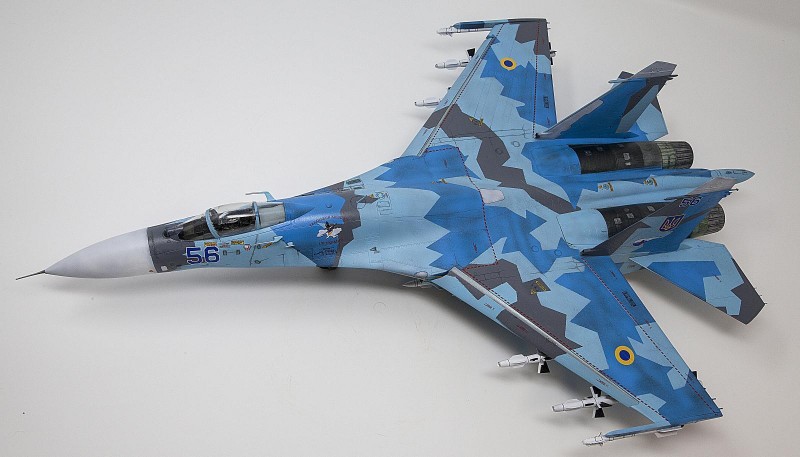
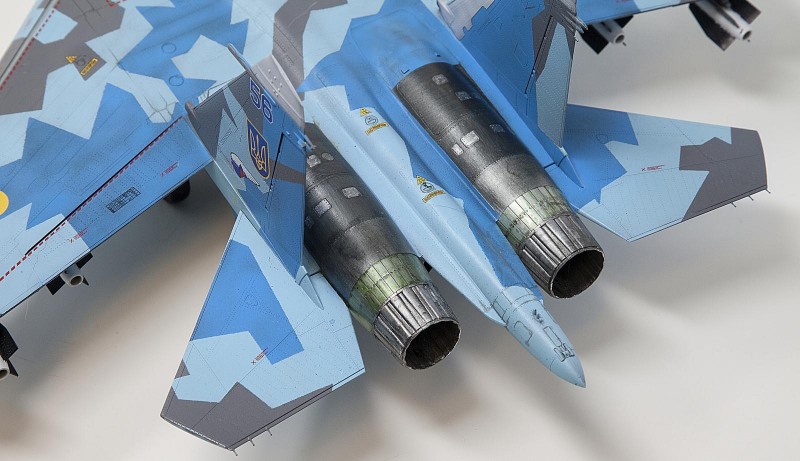
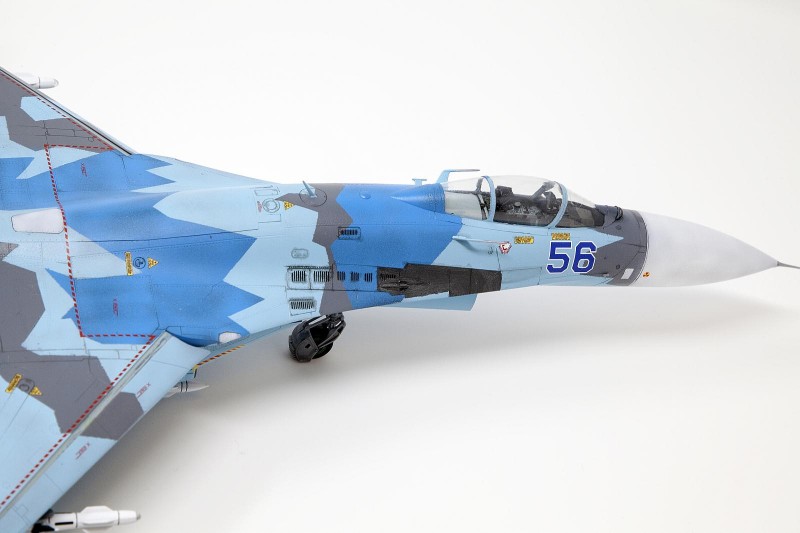
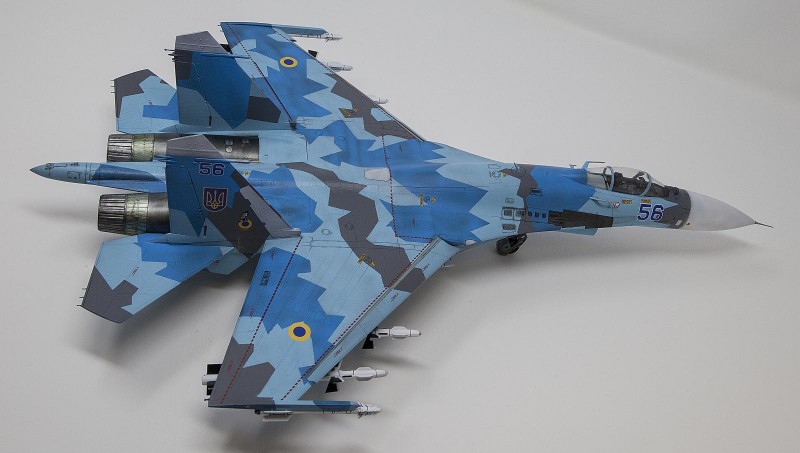
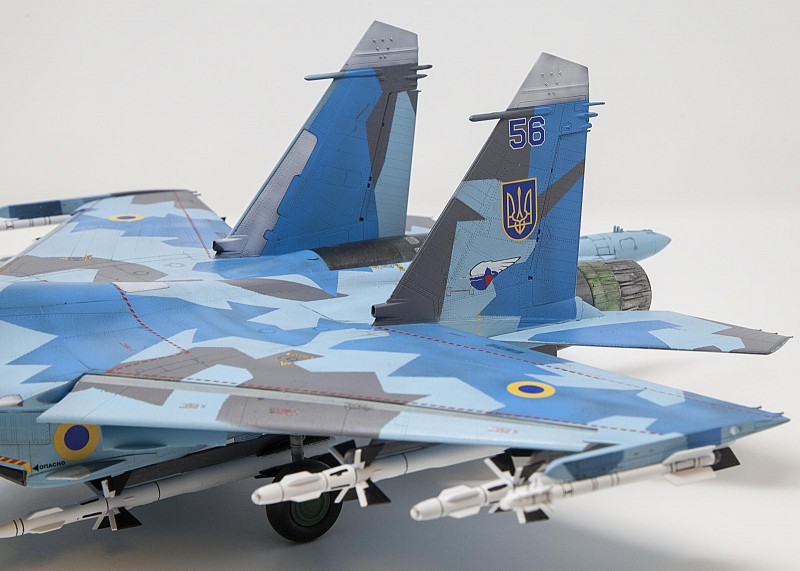
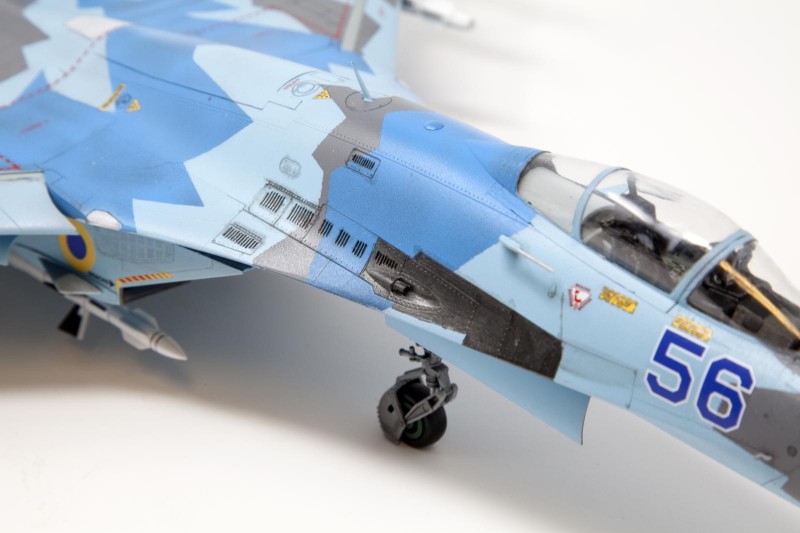
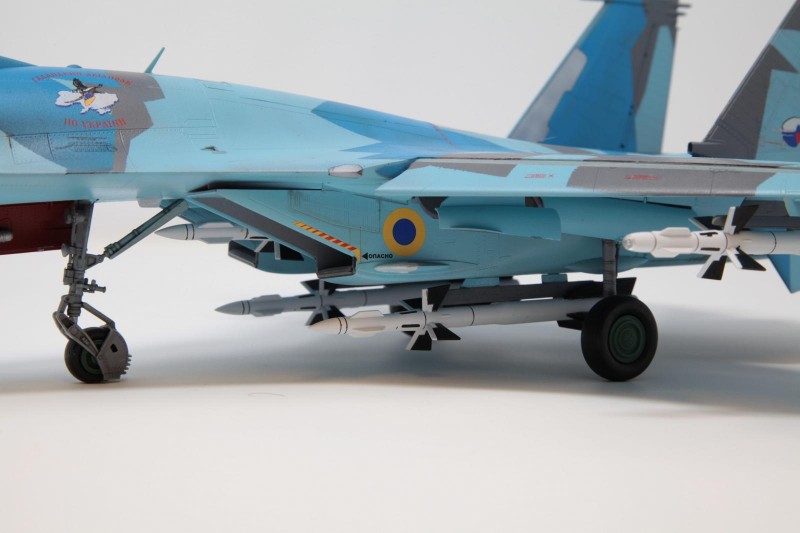
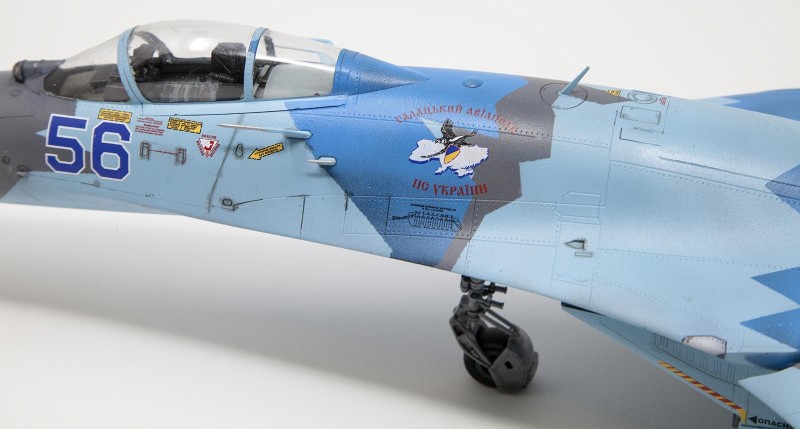
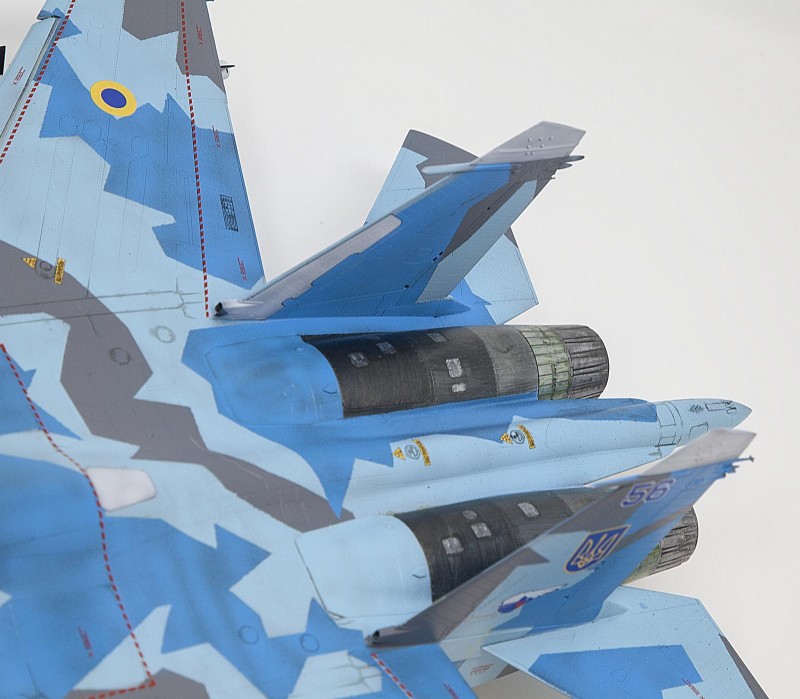


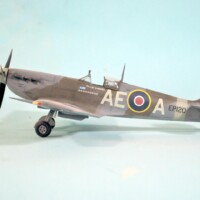
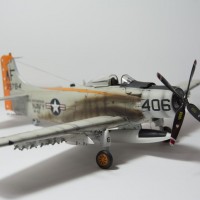
Nice piece about modern air combat and obviously a very cool model of the Flanker. Great paint work
Great paint scheme and interesting info.
I've always liked the multiple blues Flankers wore. They are very nicely proportioned aircraft. Nice job on this one!
Beautiful painting. Great to you provided the detailed building of this model.
Beautiful work on the model and a great result. Thanks much for the lecture course on modern air warfare (a topic I am only 50 years behind on 🙂 )
That's a trully beautiful result, Wes! Great painting, engine "metallics" included, as well as excellent ordnance execution. I definitely enjoyed the very informative relevant air doctrine.
All the best!
That's a beautiful Flanker! Nice in the splinter scheme - I may have to do one in splinter soon...
Great flanker and report! Kudos!
Good job! Excellent report!
Great build and color scheme!
Wes, a very nice Flanker.
I love a three tone camouflage and yours looks great.
Liked!